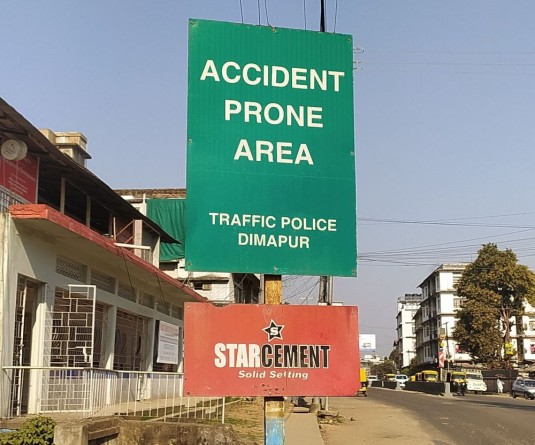
Along Longkumer
The subject of citizenship is an important part of a country’s political discourse. The constitution of India talks about persons who became citizens on January 26, 1950 while Parliament has enacted the Citizenship Act 1955, making elaborate provisions for the acquisition and termination of citizenship.
The law of Indian citizenship therefore is such that new citizens are being added even without the controversial Citizenship Amendment Bill 2016. In other words we need to understand that the present law already permits acquisition of citizenship, for example—either by registration, naturalization etc.
What the proposed Amendment does is to make it easier for certain groups of people to acquire Indian citizenship. They are primarily Hindus, Sikhs, Jains, Buddhists, Parsis and Christians from Afghanistan, Pakistan and Bangladesh. The Bill also seeks to reduce the requirement of 11 years of continuous stay in the country to six years to obtain citizenship by naturalization.
Yes, the large scale protests across Northeast India is due to the genuine fear—among the indigenous population of the region including in Nagaland—that the present Amendment will give legitimacy to illegal migrants and disturb the delicate demography of the region.
Without going into the complexity of the present discourse over the rights and wrongs of the Citizenship Amendment Bill 2016, the argument that this column wants to put forward is simply this: whether Nagaland is prepared to tackle the menace of illegal migration—past, present and future.
Whether the Citizenship Amendment Bill 2016 is passed or not, we still need to have the right system in place. That is the best guarantee for protecting the rights and security of the State and its citizens.
And if the civil society groups leading the protests are so concerned for the Citizenship Amendment Bill, what immediate plan of action does it have to detect and deport the illegal migrants who are already in Nagaland?
A way forward to address the problem of illegal migrants is to put in place a robust system that can enforce the present law already in place—the Bengal Frontier Regulation 1873 and the Inner Line Permit (ILP) regulation.
But again honestly, is it practical to bring the entire commercial hub or district of Dimapur under the ILP regime? Logistics-wise also it would be extremely difficult to enforce ILP given that there are daily commercial flights, and railways operating in Dimapur.
Free movement of goods and services under some form of regulation, such as issuing work permits, should be allowed at least in the Dimapur municipal area. A blanket imposition of ILP in the commercial hub of Dimapur will be economically detrimental and a step backward.
Nevertheless, if at all ILP is enforced in Dimapur, as is the popular demand of the public, a complete overhaul of the security and administrative apparatus will be required, including strict surveillance and monitoring of all entry points.
During a recent lecture organized by The Morung Express newspaper in Dimapur, one of the speakers remarked that Naga society is mostly “ill-informed.” We tend to be “reactive and only looking at the immediacy or the urgency of the situation.”
Instead we need to reflect a little bit more and understand issues before over-reacting sometimes.
Let us consider this. The main argument of the present protests by civil society groups in Nagaland is that the Citizenship Amendment Bill would open the floodgates of more illegal immigrants into the State.
But how many of us protesting against the invasion of illegal migrants into our land are also raising our voices and concern over the broad-gauge railway line connecting mainland India (Assam) to Kohima, the heart of the Naga Hills?
Resurgence in the influx of migrants is also anticipated in the wake of the churning in Assam over the implementation of the National Register of Citizens.
Since trains are considered to be their preferred mode of conveyance, have we suggested any security measures at railway stations for ensuring proper verification and surveillance of migrant labourers?
Also what steps are being taken by the NGOs and district administration of Dimapur to actually deport the existing illegal migrants who have found safe haven in and around Dimapur, and the adjoining foothill areas of Nagaland?
Do we also have official guidelines for contractors, businesses, NGOs etc., hiring migrant labourers to ensure proper verification and maintain a database?
The Citizenship Amendment Bill 2016 may or may not come but the challenges posed by immigration will remain.
The newly formed Joint Committee on Prevention of Illegal Immigrants (JCPI) recently advocated bringing about a strong and permanent mechanism to deal with this issue. A committee on ILP was formed by the present government and would have submitted its report by now.
One suggestion is to restructure the Department of Border Affairs, which is under the Administrative Head of Commissioner Nagaland, and create another division to deal with the wider issue of immigration.
An example to cite is the Department of Immigration and Border Protection (DIBP), Government of Australia that is responsible for immigration, citizenship and border control (including visa issuance). Better still is to study the workings of the Immigration Bureau in Thailand.
Bandhs alone will not solve our problems. Neither will a weak and corrupt system allow us to respond to the range of threats we face.
What long term measures should be taken by the village authorities, tribal hohos and the government towards improving our homeland security? We need to be better informed and equipped at the same time.
The above write-up first appeared in Think-Tank section of The Naga Republic (www.thenagarepublic.com)



